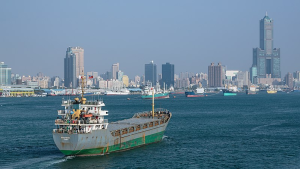19
Mitchell Wallin
Introduction
In the year 2020, technology is crucial to almost every aspect of our everyday lives; connecting us to each other, our passions, our jobs. Also in the year 2020, the world has faced an unprecedented challenge: COVID-19. COVID-19 has had an extreme impact on the supply and demand of consumer technology due to modified policies in production facilities, shipping constraints, and increased time spent in virtual spaces.
Connection to STS Theory – The Tragedy of the Commons

“[Hardin] used the analogy of ranchers grazing their animals on a common field. When the field is not over capacity, ranchers may graze their animals with few limitations. However, the rational rancher will seek to add livestock, thereby increasing profits. Thinking logically but not collectively, the benefits of adding animals adhere to the rancher alone, while the costs are shared. The tragedy is that ultimately no rancher will be able to graze the field due to overconsumption,” (Banyan, 2020, para. 1).
As more and more people try to purchase consumer goods in a time of extended shortage, the worse the situation becomes for everyone. Some people took advantage of the situation, buying up the entire stock of certain items and then re-selling them for an significantly inflated price. Everyone is using online spaces, but some service providers are not equipped to deal with the quantity. The need for everyone to be connected online leads to system failures, preventing everyone from accessing what they need.
Modified Policies in Production
Due to COVID-19, tech companies and governments have modified their operations in production facilities. The most basic change being that “people cannot go to work” (Narjoko, 2020, Section II, para. 3); the immediate reaction by most to a deadly pandemic was to enforce isolation policies. Everyone, including workers in supply chains, was ordered to remain in their homes. In time, as conditions improved and as policies allowed, workers returned.
Still, workspace movement and coordination were limited, and this “restricted movement has affected the industry- and such limitations are expected to continue” (Versa Electronics, 2020, Sections 3-4). These restrictions on overseas manufacturing created a shortage of consumer technology the world needs to adapt to the current situation.
Voices of Clemson Undergraduate Students
“I experienced the shortage firsthand; over the summer of 2020 I built several custom computers. Finding parts for each was a nightmare.”
International Shipping Constraints
Distribution of goods also faced severe restrictions due to COVID-19, exacerbating the shortage in consumer tech. International shipping was acutely affected. “Initially, everyone thought that it was China’s problem.” (Berti, 2020, para. 1); policies were put into place to ensure the virus did not reach the rest of the world through global shipping chains.

“After a passenger tested positive for COVID-19 onboard a Princess Cruises ship off the coast of Japan, ports started limiting – and eventually banning – cruise traffic at their terminals. Asian ports in countries including South Korea, Taiwan, and Singapore also started introducing screening procedures at their hubs, putting Chinese crews under quarantine and working to limit the spread of the virus” (Berti, 2020, para. 8).
These screening and quarantine procedures delayed shipments by weeks and discouraged people from working as crews on shipping vessels. The projected delays in shipping and reduced demand due to financial uncertainty meant shipping sectors “found themselves dealing with orders and trip cancellations” (Berti, 2020, para. 9).
With the potential for indefinite delays and reduced crews, these policies and countermeasures worsened the growing shortage of consumer technology.
Increased Virtual Use
What is the worst possible thing that could happen during a drought of something? A sharp increase in the need for that something. People shifted their work, learning, and pleasure to online spaces to adapt to isolation policies and social distancing orders. With most of the world under orders to remain distant from each other but still needing to continue their lives, the demand for consumer technology increased dramatically.
“Additionally, mobile PC growth was particularly strong, driven by several factors including business continuity for remote working, online education and consumers’ entertainment needs. However, this uptick in mobile PC demand will not continue beyond 2020, as shipments were mainly boosted by short-term business needs due to the impact of the COVID-19 pandemic.” (Kitagawa-Gartner RD, 2020, para. 3)

Universities and schools worldwide responded to COVID-19 by making an immediate switch to an online format, transitioning to a hybrid style as conditions improved and restrictions lifted. With both methods, many institutions required students to possess a device with a webcam (Clemson University CoE GE Common Syllabus, 2020, p.6). Workplaces have done the same; “consumers have moved dramatically toward online channels, and companies and industries have responded in turn” (McKinsey, 2020, para. 3). Businesses expanded their online presence and services, as well as hosting meetings through online spaces. Finally, because people are limited to their homes, many turned to virtual entertainment; streaming services and gaming became more popular during the pandemic. These measures to protect ourselves from COVID-19 and how we adapted led to increased demand for consumer technology.
Conclusion
Overall, this situation of extremely low supply combined with a high demand could have been avoided. Global production and distribution chains are fragile and slow to adapt; if this could change, situations like COVID-19 would not have such an extreme impact on global economies. The policies that caused this to happen were put in place to help save lives; it is better that we sacrifice some efficiency and comfort in order to protect people.
References
Clemson University. College of Engineering, Computing and Applied Sciences General Engineering Common Course Syllabus, 6. https://clemson.instructure.com/courses/111057/files/7237402/download?wrap=1
Kimura, F., Thangavelu, S. M., Narjoko, D., & Findlay, C. (2020). Pandemic ( COVID ‐19) Policy, Regional Cooperation and the Emerging Global Production Network †. Asian Economic Journal, 34(1), 3-27. doi:10.1111/asej.12198
Banyan, M. (2020, May 14). Tragedy of the Commons. Retrieved October 13, 2020, from https://www.britannica.com/science/tragedy-of-the-commons
Berti, A. (2020, October 06). The impact of Covid-19 on global shipping: Part 1, system shock. Retrieved October 13, 2020, from https://www.ship-technology.com/features/impact-of-covid-19-on-shipping/
Electronics, V. (2020, May 20). Electronics Manufacturing – The Impact of COVID-19 on the Industry. Retrieved October 13, 2020, from https://versae.com/covid-19-electronics-manufacturing/
How COVID-19 has pushed companies over the technology tipping point–and transformed business forever. (2020, October 06). Retrieved October 13, 2020, from https://www.mckinsey.com/business-functions/strategy-and-corporate-finance/our-insights/how-covid-19-has-pushed-companies-over-the-technology-tipping-point-and-transformed-business-forever
Gartner Says Worldwide PC Shipments Grew 2.8% in Second Quarter of 2020. (2020, July 9). Retrieved October 13, 2020, from https://www.gartner.com/en/newsroom/press-releases/2020-07-09-gartner-says-worldwide-pc-shipments-grew-2point8-percent-in-second-quarter-of-2020
Images
“Cows on Selsley Common” by Sharon Loxton is licensed under CC BY-SA 2.0
“Cargo ship En Cheng entering the harbour of Kaohsiung” by CEphoto, Uwe Aranas is licensed under CC BY-SA 3.0
“Zoom – Video conferencing, Web conferencing, webinar application logo” by Marco Verch is licensed under CC BY-SA 2.0

